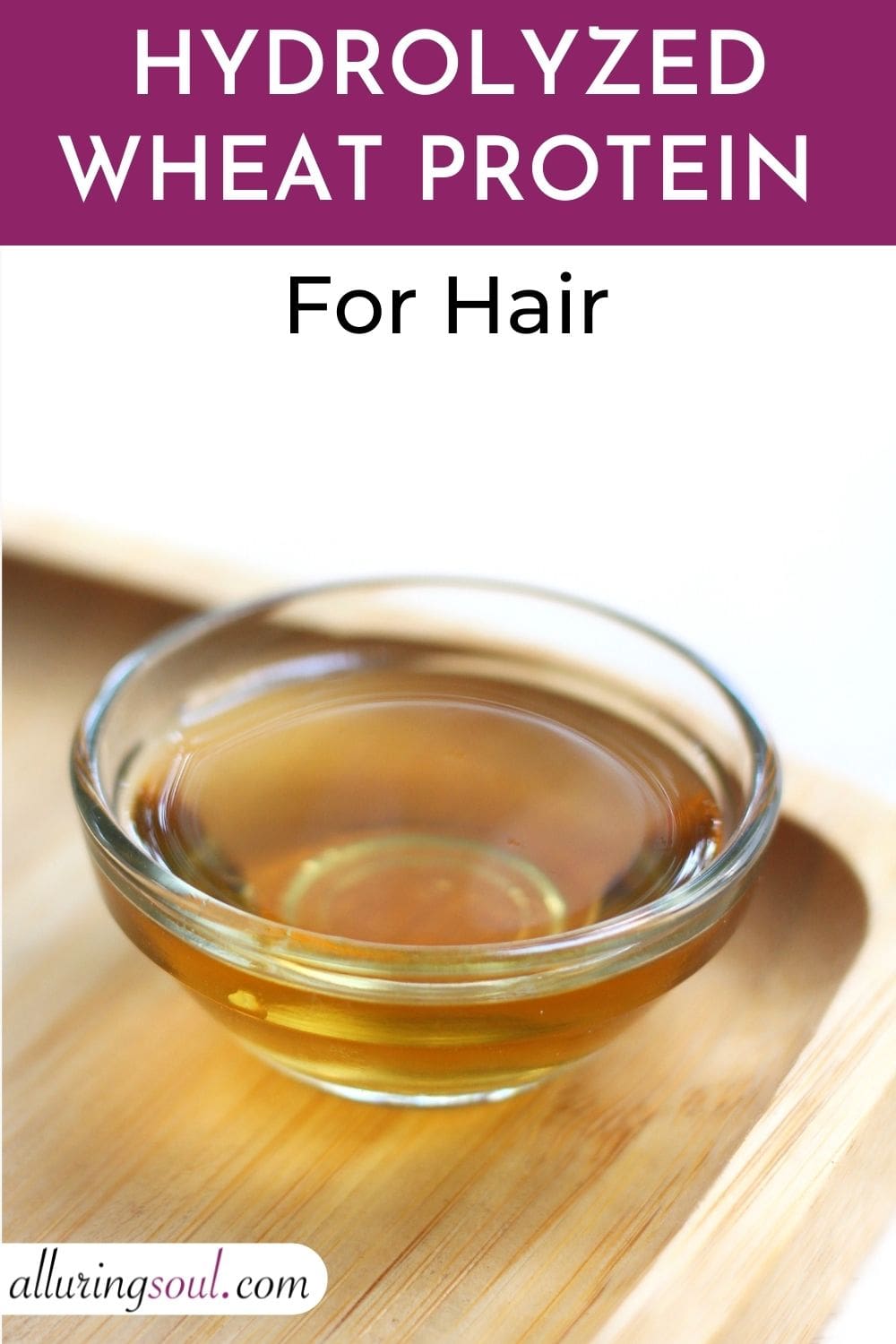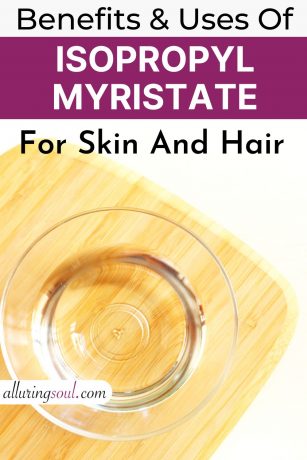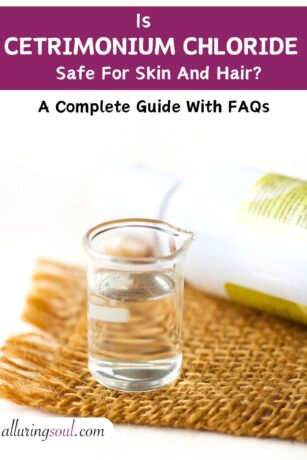Hydrolyzed wheat protein penetrates deep into the hair cuticle to strengthen the hair from within. In the process, it also reduces breakage, frizz, and other damages caused by the sun and heat. Plus, this strengthening ingredient increases hair elasticity and improves moisture retention to give you soft, bouncy, and shiny hair.
Let’s take a look at what is hydrolyzed wheat protein and what are its benefits for hair.
What Is Hydrolyzed Wheat Protein?
Hydrolyzed wheat protein is made from wheat germ’s protein and gluten. It is fundamentally a large protein molecule undergone a chemical process where it is split into smaller fragments with the addition of hydrogen and hydroxide(source). Thus, hydrolyzed wheat protein is water-soluble and can be easily absorbed by hair strands due to its smaller molecular size.
Usually, it is used at a concentration between 0.5 to 5%. Moreover, this product is solid amber in color and has a mild fragrance.
How Is Hydrolyzed Wheat Protein Extracted or Made?
Hydrolyzed wheat proteins are wheat derivatives as they are extracted from soft wheat, which has several proteins in them, but mainly gluten and glutamine. These wheat proteins go through a process called enzymatic hydrolysis that breaks them down into smaller pieces with low molecular weight. And the fragments are small enough to pass through the hair cuticle and bind with your hair keratin.
What Are The Benefits Of Hydrolyzed Wheat Protein For Hairs?
1. Due to its low molecular weight, the hydrolyzed wheat protein penetrates deep into the hair shaft, including its three layers, known as cuticle, cortex, and medulla. There, it fills in all the microscopic gaps present throughout the area, which makes the hair strands increase their strengthening ability from within.
2. Hair strands are more prone to hair damages such as breakage, split ends, and hair loss if it lacks moisture and protein. But hydrolyzed wheat protein restores these damaging effects by boosting strands with hydration, protein, and improved hair elasticity.
3. Since it boosts the hair’s moisture retention and keeps them locked in, the ingredient leaves your hair with a soft and bouncy feel after its use.
4. The use of hydrolyzed wheat protein makes hair increase in its volume. It does so by keeping the hair well-conditioned and retaining its moisture, which in turn, increases each hair strand’s diameter. Thus, giving overall hair a fuller appearance and adding more volume and body to it.
5. Hair becomes unmanageable when it is dehydrated, damaged, and frizzy. It makes the hair easily tangled and difficult to style. However, hydrolyzed wheat protein seals smooth down the hair cuticles and minimizes frizz and friction. This helps to tame the hair and make it more manageable.
6. Hydrolyzed wheat protein forms a protective layer on hair by replacing the lost proteins present there and improving the hair texture. It then shields the strands from damages caused by sun exposure, chemical treatments, and heat styling.
Does Hydrolyzed Wheat Protein Dry Out Hairs?
Hydrolyzed wheat protein is a moisturizing protein that benefits dry, damaged hair as it has the ability to retain moisture. However, make sure to use an appropriate amount of this ingredient as too much of it can leave hair feeling limp and greasy.
Is Hydrolyzed Wheat Protein Safe To Use?
Yes, hydrolyzed wheat protein is safe to use in hair care products when used in a specific amount. However, if you have coeliac disease or gluten sensitivity, you might want to consult a professional before using it.
How Often Should I Use Hydrolyzed Wheat Protein For Hair?
It depends on the person’s hair condition, but since it is a strong and powerful ingredient, it is best to use it with a gap of 4-6 weeks. But, damaged and high porosity hair will require this treatment more often than low porosity hair.
Does Hydrolyzed Wheat Protein Contain Gluten?
Yes, hydrolyzed wheat protein contains gluten as it is extracted from wheat, a rich source of gluten.
Is Hydrolyzed Wheat Protein Shampoo Gluten-Free?
Hydrolyzed wheat protein shampoo may contain gluten as the protein is derived from wheat itself.
Does Hydrolyzed Wheat Protein Repair Damaged Hair?
Dry and damaged hair benefits the most with the use of hydrolyzed wheat protein, as it has the ability to repair and restore damaged hair.
Is Hydrolyzed Wheat Protein A Silicone?
Yes, hydrolyzed wheat protein is silicone. But it is a ‘good’ silicone as it is water-soluble.
Is Hydrolyzed Wheat Protein Good For Low Porosity Hair?
Low porosity hair contains more hair protein than high porosity hair; thus, hydrolyzed wheat protein shouldn’t be used in this type of hair more frequently as it can make the hair limp and greasy.
What Products Contain Hydrolyzed Wheat Protein?
Products like shampoo, conditioner, styling cream, leave-in-cream, and hair supplements frequently consist of hydrolyzed wheat protein.






No Comments